Working Your Way through the Welding Options
There are plenty of choices in welding technologies for mold repair. Here, a toolroom supervisor and his team share some at-the-bench knowledge of them to help you decide which one’s right for you.
In the world of mold manufacturing, welding is anathema. In the work of mold repair, where parting lines get rolled over, shut offs wear and gall, lifters break and crash the cavity, welding can be either a boogeyman or a savior; a best option or a last resort. As such, it behooves anyone involved in mold repair to be somewhat familiar with the processes and limitations of welding.
First off, I’m certain that anyone interested enough to read about mold repair is cognizant of the fact that we’re not talking about fabrication and the guy with the MIG welder is not your go-to when it comes to doing weld repairs on a mold. Welding for mold repair is for our intents, any weld on surfaces that form the molded part.
Looking at mold repair welding options—with each having a variety of sub-sets—every method has its place and limitations. The decision to invest in any specific welding technology and the requisite training needs to be made with regard to three factors: (1) quality of repair needed, so that you can match the equipment to the expectation; (2) quantity of repair work anticipated to help calculate an ROI (check your history for a baseline); and, (3) the option of outsourcing weld repairs.
Keep in mind that with outsourcing comes the headache of logistics. For example, scheduling, availability, transportation, additional downtime, lost production etc. On the other hand, outsourcing allows you access to the knowledge, skills and expertise of a specialist.
Resistance Welding
In terms of initial investment, resistance welding though not the cheapest is still at the low end of the scale. This type of equipment is available from a variety of vendors from polishing suppliers to mold component suppliers. Not to be dismissive of this technology, it is probably the most limited in terms of efficacy. Resistance welding is basically a spot welding process. To accomplish a repair you perform a series of over-lapping spot welds and then if necessary go over the area several times layering to get an adequate build-up.
Its advantages include its lower cost to purchase, it can be used for very small repair areas and the basic operation of the equipment can be learned in a few minutes. However like any new skill or equipment, it takes does take time to master, and this equipment—though simple and straightforward—is no exception.
With things that are simple to understand and operate the learning is often what not to do. To maximize the effectiveness of resistance welding, don’t rush, take your time to clean the workpiece, the electrode and the filler material; take time to carefully position the filler material and electrode; take time to learn the discipline of removing your foot from the pedal before taking the electrode off the workpiece.
Speaking from experience, lifting the electrode while the system is energized can result in a crater blasted into your workpiece that is ten times the size of the original repair you were attempting. Due at least in part to the fact that there is no shielding gas to create a clean atmosphere for the weld, porosity and contamination in the weld is a concern. Another drawback is that weld penetration is minimal at best. There are three types of media with this process: (1) sheet stock, (2) wire stock and (3) powder.
All of them—once the repair is polished—have a tendency to leave a repair with plenty of inclusions (for example, cavities, holes, voids, etc.). This is rarely acceptable for a surface that forms the molded part; although sometimes it will pass, if it is on the core side of the part. Again, patience, cleanliness and attention to technique can mitigate these dangers. This option is quick, and sometimes an acceptable band-aid repair until something better can be done.
TIG Welding
TIG (tungsten inert gas) welding is also a reasonably inexpensive option, but unlike resistance welding, TIG welding offers significant penetration and produces an Argon gas shield that provides a clean environment within which the weld can take place. The result is what can be referred to as homogenous weld. The TIG arc melts the base metal and filler rod is added to the pool. The resultant repair is all one piece of metal.
Sure there is a possibility of inclusions due to contaminants (or sub-standard base metal), but these are the exception not the rule. The down side of repairs made with this process is the HAZ (Heat affected Zone). The most obvious effect is seen when the repair is brought back down to flush and the sink around the weld becomes apparent. The amount (depth) of the sink is minimal and in some cases can be blended adequately.
Again, speaking as an end user not a metallurgist, I’ll borrow a phrase from an engineer I once worked with: “I know more than I understand” about how heat affects the steel being welded. You have a small area that gets heated to several thousand degrees and two inches away the steel may be only a couple hundred degrees. This range of heat affects the hardness and characteristics of the steel in different ways at different places along the temperature scale. The real problem is that due to these changes the repair may be significantly different than the base metal, and consequently may not take a polish the same as the surrounding steel. The difference can be enough to show on a molded part.
I’ve seen expert polishers who can make an acceptable match, but I’ve also seen repairs that need periodic attention to maintain the match. There are special handling procedures that can mitigate the effects of TIG welding. Full process color match welding entails pre-heating (that can be problematic when you have a 30,000-pound cut-in-the-solid cavity block), filler material matching and post welding tempering. This process can dramatically reduce the effects of heat on the repaired mold, but takes time and expertise. Color match welding is probably best left to a professional with experience.
Micro Welding
Micro welding is a sub-set of TIG welding, with the added benefit of small scale repairs using filler wire as small as 0.003, amperage settings under 10 amps and on the level of requiring magnification. Needless to say with repairs, the less material added, the less machine or hand work required to take it back to net shape, the less time involved in the repair.
Due to the small size of weld—for the purposes of mold repair—micro welding is a significant enhancement of the TIG welding process, but comes with some increase in initial investment. Further, it is a continuous arc process that builds up heat in the workpiece and results in the attendant HAZ though on a smaller scale.
Another permutation of TIG welding is pulsed TIG welding. The advantage of pulsed welding is that the build-up of heat is minimized, and so the effect on the surrounding steel. These units give micro sized spot welds that can be overlapped, but unlike resistance welds, are in fact homogenous welds done with a shielding gas to enhance cleanliness and uniformity of the weld.
Due to their ubiquitous nature, straightforward TIG welders are inexpensive. On the other hand, micro TIG welding setups are more expensive.
Laser Welding
Without considering all relevant factors, laser welding is the closest thing to a perfect weld; at least when it comes to mold cavity repair. Microscopic welds can be performed with total control of the size and location of the weld. From filling in small voids to repairing parting line flash, there is probably not a more accurate option.
Due to the fact that so much of the process is equipment controlled, the learning curve is short. You won’t be an expert the day you unpack the welder, but you will be making acceptable welds with minimal instruction right from the start.
From an initial investment standpoint, the equipment is by far the most expensive. Coupled with the ongoing cost of annual maintenance and the relative fragility of the equipment, you really need to do your homework before deciding to invest in this technology. Laser welding equipment is not designed to be put in a truck and transported from work site to work site. Rough handling may require a service call to have mirrors realigned. And bulbs have a limited life expectancy and may also require a factory trained technician to install. Additionally, laser welders have self contained cooling units, which depending upon the type, need DI water changed out from 3 months to 2 years. These are not warnings, just factors to be aware of before making an investment.
Laser welders range in price from enclosed cabinet units suitable for welding small cores and inserts to portable units with extendable arms capable of in-situ welds done at the press. When you have a huge mold that requires hours to remove from or set up in a press—and even more time to be brought back up to heat after being cooled—in-press repairs have a double benefit when calculating return on investment.
Plasma Arc Welding
Plasma arc welding is not new technology, which makes me wonder why it is not more widely used in mold repair. The pulse feature seems to make it a viable option for mold repair yet even this does not appear to be a recent development. Plasma welding like laser welding is rather easy to learn. Plasma welds are done through a microscope with optics that provide ten times magnification and auto darkening lenses, so cumbersome helmets are not necessary. With that level of magnification accurate repairs can be made to fine details. A plasma welder comes in under $20,000, which may be an easily justifiable alternative in a repair environment.
Although laser welding, pulled plasma arc welding and pulsed TIG welding share the pulse feature, the technical aspects are vastly different. The pulse is in contrast to a continuous arc used in TIG welding processes. The pulses are short bursts of energy high enough to actually melt both the base metal and the filler rod; yet residual heat is quickly dissipated in the base metal. It doesn’t take much of a TIG weld to make a workpiece too hot to handle, laser, plasma and pulsed TIG result in a workpiece that is basically at ambient temperature when finished.
Several of these options have been described as “easy to learn,” which is not to say that they are child’s play. In contrast to the dexterity, technique and experience required to perform delicate work with a conventional TIG, the more expensive options provide increased machine control of the welding process, and due to the micro size, the mishaps are likely to be less disastrous.
From the Field
The editors of MoldMaking Technology reached out to a handful of moldmakers and molders to learn about their mold repair and welding experiences.
Scott Phipps, President of United Tool and Mold (UTM; Easley, SC) shares his thoughts on how laser welding is a tool, not a cure-all or magic eraser. “You still need to have a skilled employee with significant TIG welding experience that understands parent materials, rods, size of rods, and welding applications in general. Laser welding is good for small edges, small build up, small pits, and hard to get to areas. We have employed laser welding in grained areas and high polish finishes due to having very minimal heat affected zones and you do not affect the surrounding areas. Special attention is needed to ensure that you are laying beads or build up so as to not have a chipping issue. Laser welding is especially nice with copper nickel alloys and aluminum small touch up areas. Skill levels on a laser welder can be increased at a faster pace than that of traditional welding applications. This is due, in part, to the simplicity of the machines versus the skill levels needed with the TIG welding applications.”
Over at Thogus micro welding experts Sean Murphy and John Lauer explain that in-house micro welding capabilities save them time and money from not having to outsource mold repair jobs—such as tiny core pins cracking—within hours rather than waiting days for the new core pins to come back from an outside source. Micro welding allows them to build up small edges, grind down smaller areas, polish and put them back in the tool, so they can go back into production much faster than those without this technology.
Adam Nelson, Laser Business Manager for R&D/Leverage (Lee's Summit, MO) explains how choosing the proper welding technique is essential. “We at R&D/Leverage use five-axis 100 Watt Nd:YAG lasers, primarily. Choosing the proper welding technique is key. You have to balance speed, efficiency and precision. TIG can handle a large area for more bulk welding, but laser welding does not leave a HAZ (Heat Affected Zone) on the part. This allows us to laser weld a tool and machine it with much greater ease compared to a tradition TIG weld where you will find surface hardening due to the HAZ. We also find the laser weld can be applied in a more precise manner, making the post processing (whether it is milling, laser engraving or texturing) more efficient.”
When it comes to laser engraving and texturing within mold repair, Nelson adds that the challenges they face come in the form of re-creating or matching the existing laser-processed features when they generally do not have engineering documentation. However, he notes that they are well ahead of the curve in multiple areas.
“For laser engraving, we are working to re-create the laser engraving that is pre-existing and undamaged. With this scenario we have to consider the material make-up, hardness and surface finishes. Fortunately, with our experience we have created libraries documenting these process parameters. These documents along with other reverse engineering techniques allow us to reverse engineer that pre-existing tool and match the undamaged portions very well,” explains Nelson.
He continues, “Laser texturing is a very similar situation. Here we are working with the latest texture mapping software and vision systems, which allow us to match the textures exactly to the existing part, rather than re-texturing or attempting to blend into the existing texture. Once we have that texture mapped digitally into a solid model we can then use our process settings library to apply that texture to the mold in a very precise manner.”
When it comes to considerations for 24/7 tool repair, Dale Pringle, Tooling Division Manager for Tech Molded Plastics (Meadville, PA) says, “Repair and protection are likely the two primary issues that encompass uptime contribution. It’s part of our everyday experience. As far as mold repair, which involves breakage, we use either spare tooling to replace it or a micro-welding process. Then we stress-relieve it and flash chrome it afterwards to increase the life of the core. This is necessary because the process of welding can change the properties out of the steel. Since we have 24/7 production, we always have toolmakers ready to repair 24/7.”
When addressing steel conditions that require repair, the solution depends on several factors including the remaining expected life of the product, according to Pringle. “In our experience, plating over areas of concern can mask the issue, which could become an unrecognized liability at a later time. Welding becomes one of the few longer-term cost-effective solutions. Rebuilding the steel can be expensive and time consuming especially when production downtime may be affected. Popular thought has the belief that the welded area may be stronger after welding, but that may not be entirely accurate. Reworked conditions are rarely as good as new. Original steel properties, in most cases, are the best that they will ever be. If fragile tooling and conditions exist where breakage, damage and/or repair is frequent, the best solution is to address the root cause and take preventative action whenever possible.”
Pringle goes on to emphasize that the quality of the micro-weld process and the person performing the task both have an impact on performance. As with most highly technical services, the performance and quality of the final product is based on the techniques and skill of the people performing the task.
He adds that thoughtful consideration of geometry and its relative size, shape and properties has an influence over the decision to micro weld or laser weld. He advises to study the options that best fit the project and expected outcome.
“We primarily focus on long-term, low maintenance solutions. We understand the need for minimizing downtime, increasing the effective rate of quality while in production and reducing the risk of rework. Due to this focus the choice to outsource micro and laser welding services is a no-brainer. Our operations live by the length of good quality production runs. If a company needed to invest in in-sourcing weld repair technology and training due to constant repair needs, the solution is to prevent the repair from being needed,” states Pringle.
Summary
These from-the-field observations about mold repair technologies are meant to pique your interest and then encourage you to further investigate their various capabilities and benefits to your specific mold repair applications. Remember that one piece of equipment or process will not be the best for every application. The key is to know what your requirements are and then seek the best option.
Related Content
Think Safety: Eliminate Hazards Throughout the Shop
The tooling community is taking advantage of new products for safer mold shops and molding facilities.
Read MoreHow to Overcome Complex Mold Texturing Problems
Key benefits when considering laser technology for mold texturing and repair.
Read MoreThe Ins and Outs of Hot Runner Temperature Control
A training checklist that explains the why and how of proper hot runner temperature control and system management.
Read More5 Hot Runner Tips for Moldmakers and Molders
Best practices for initial hot runner tryouts and effective preventive maintenance.
Read MoreRead Next
In the Trenches: Taking Mold Repair to the Next Level
Improving mold repair efforts— whether you’re on the bench or managing—is not only a worthy goal, but also holds its own reward.
Read More2011 Leadtime Leader Awards: Large Shop Winner
United Tool & Mold, Inc.: Charging Forward with Unique Mold Repair Niche.
Read MoreLaser Weld Repair of Molds
A nuclear weapons welding process is used to repair molds for the plastic injection mold industry.
Read More

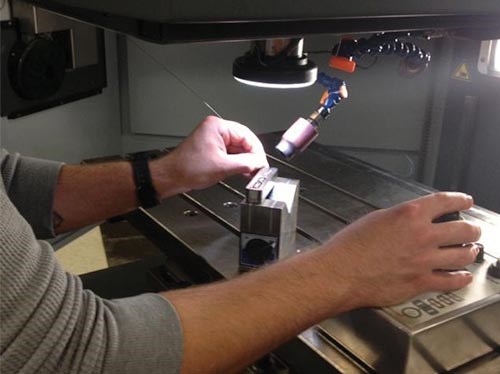
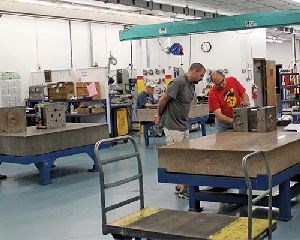
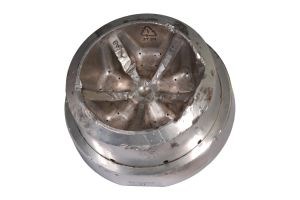
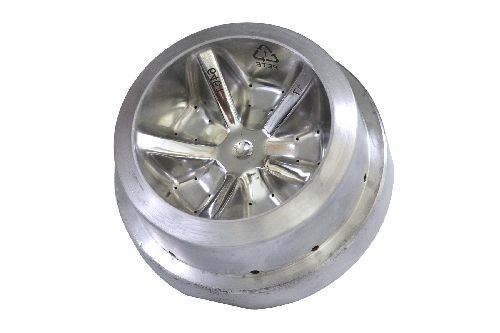

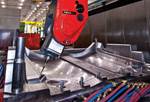
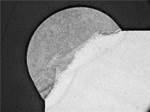



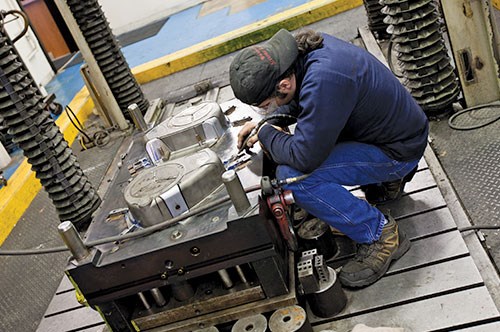





.jpg;maxWidth=300;quality=90)







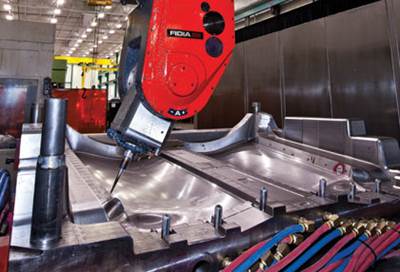

.jpg;maxWidth=970;quality=90)